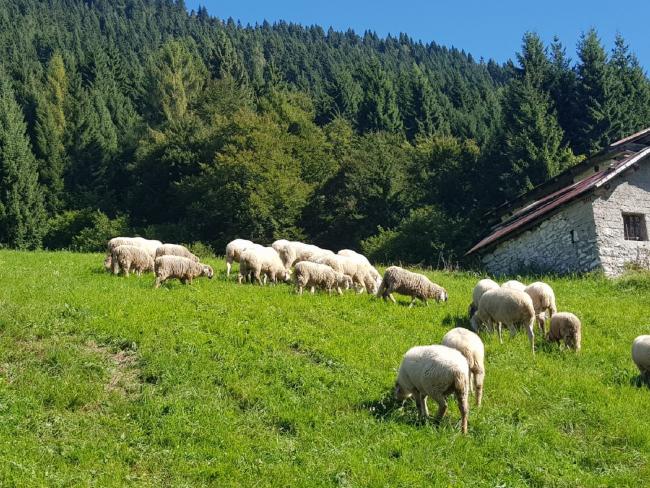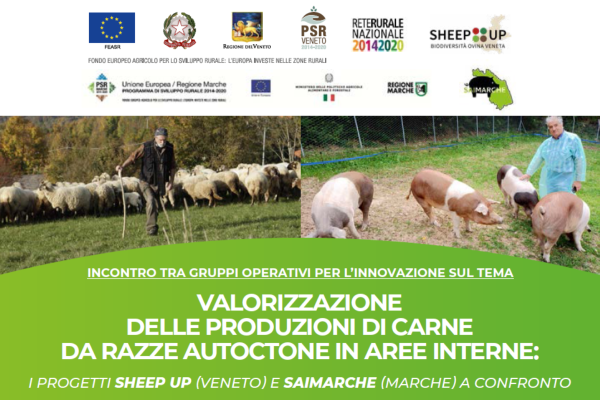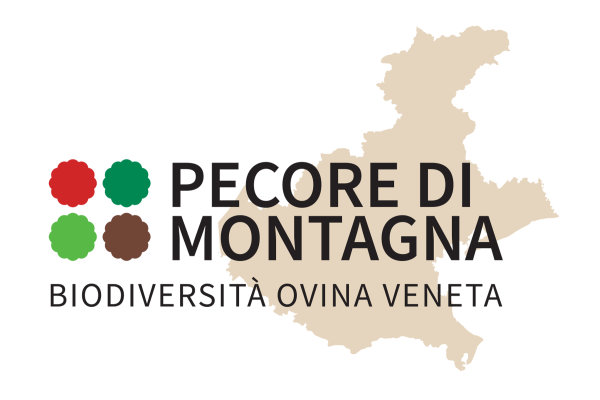Ovine Bio-diversity in Veneto: an economic opportunity for Farmers and their Territory

The typical trend of European alpine regions in the last decades has revealed a contraction in the number of companies which practise ovine farming, accompanied by a fall in the number of animals reared. The only guarantee for the maintenance of this economic activity in time is its profitability. In mountain ovine farming the dependence on public funding to balance the budget represents a high risk, as budgets shrinks. This project aims to offer an integrated model of economic enhancement of ovine production of local breeds in the short distribution chain, especially for those linked to the agri-food sector.
The project is composed of six WP developed together. They are focused on the creation of added value in each link of the mountain ovine production:
WP1: Characterization of meat and milk for their nutraceutical virtues linked to pastures
WP2: Management of secondary productions: wool (circular flow of economy, diversification)
WP3: Evaluation of ecosystem services and exploitation of pastures
WP4: Assessment/realization of innovative (or retro-innovative) ovine products, in particular for animals at the end of their reproductive life
WP5: Evaluation of possible common quality control systems for enhancing productions
WP6: Cross-sectional functional activities related to WP above
At the European level, the Alpine arc is one of the richest basins in terms of livestock biodiversity.
There are currently many alpine breeds whose conservation is considered a priority but the failure of the genetic recovery of these breeds has often been the lack of a specific and corresponding product.
In Veneto there are four local sheep breeds with limited diffusion: Alpagota (about 3,200 animals, Lamon ca 300 animals, Brogna (about 1,700 animals), Foza (about 100 animals).
The rapid abandonment of the breeding of the Venetian sheep breeds is certainly largely attributable to the reduced income that this activity can provide to mountain farms, in relation to other more profitable activities or farms.
It is therefore necessary that breeders interested in the conservation of their sheep breed develop alternative actions that make the most of the specificity and quality of their animals' products.
Moreover, in mountainous environments, and even more so in the foothills and high hill hills of the alpine arc, often characterized by degraded territories and with obvious environmental issues, breeding systems with small ruminants can represent an interesting opportunity for sustainable rural development, having a positive impact on biodiversity and landscape enhancement (ecosystem services).
This project aims to enhance the results of the research done so far on the genetic recovery of local breeds, the environmental and ecological value of open spaces (pastures), local anthropological-cultural aspects, the characterisation of ecosystem facilities and the definition of public quality systems. It will channeling all of the above into the creation of an added economic value, which the farmers need to be able to manage so as to benefit the economic sustainability and industry of their own animal production. It is thus possible, in a new and integrated manner, to carry out an endogenous development of marginal mountainous areas. The immediately applicable results refer to ovine production of indigenous breeds and will affect: -The characterisation of meat and milk in order to highlight their nutraceutical virtues linked to the use of pastures - The drawing of technical policies for production which code this relationship - The selection and realization of innovative (or retro-innovative) ovine products, in particular for animals at the end of their reproductive life - The recovery and management of the first transformation (and sale) of wool for the creation of an added industrial value in a view of circular economy - The application of participatory instruments of economic enhancement of ecosystem services offered by farms in the geographical areas of reference - The evaluation of possible public quality control systems for the enhancement of ovine production.
| Titolo/Descrizione | Url | Tipologia |
|---|---|---|
|
ETIFOR
|
Link ad altri siti che ospitano informazioni del progetto
|
|
|
TESAF - UNIPD
|
Link ad altri siti che ospitano informazioni del progetto
|
|
|
Alpagota sheep
|
Link ad altri siti che ospitano informazioni del progetto
|
|
|
Lamon sheep
|
Link ad altri siti che ospitano informazioni del progetto
|
|
|
The local sheep breeds in Veneto Region
|
Link ad altri siti che ospitano informazioni del progetto
|
|
|
Wool_Alpagota Sheep
|
Link ad altri siti che ospitano informazioni del progetto
|
|
|
Wool_Lamon Sheep
|
Link ad altri siti che ospitano informazioni del progetto
|
|
|
Wool_Brogna Sheep
|
Link ad altri siti che ospitano informazioni del progetto
|
|
|
kick-off meeting
|
Link ad altri siti che ospitano informazioni del progetto
|
|
|
Sito web del progetto
|
Sito web
|
|
|
Articolo su Corriere delle Alpi
|
Materiali utili
|
|
|
Articolo su Linea News
|
Materiali utili
|
|
|
Articolo su Vicenza Report
|
Materiali utili
|
|
|
La brochure di progetto.
|
Materiali utili
|
|
|
Foto e video del progetto
|
Materiali utili
|
|
|
Pagina Facebook
|
Link ad altri siti che ospitano informazioni del progetto
|
|
|
Project website
|
Sito web
|


